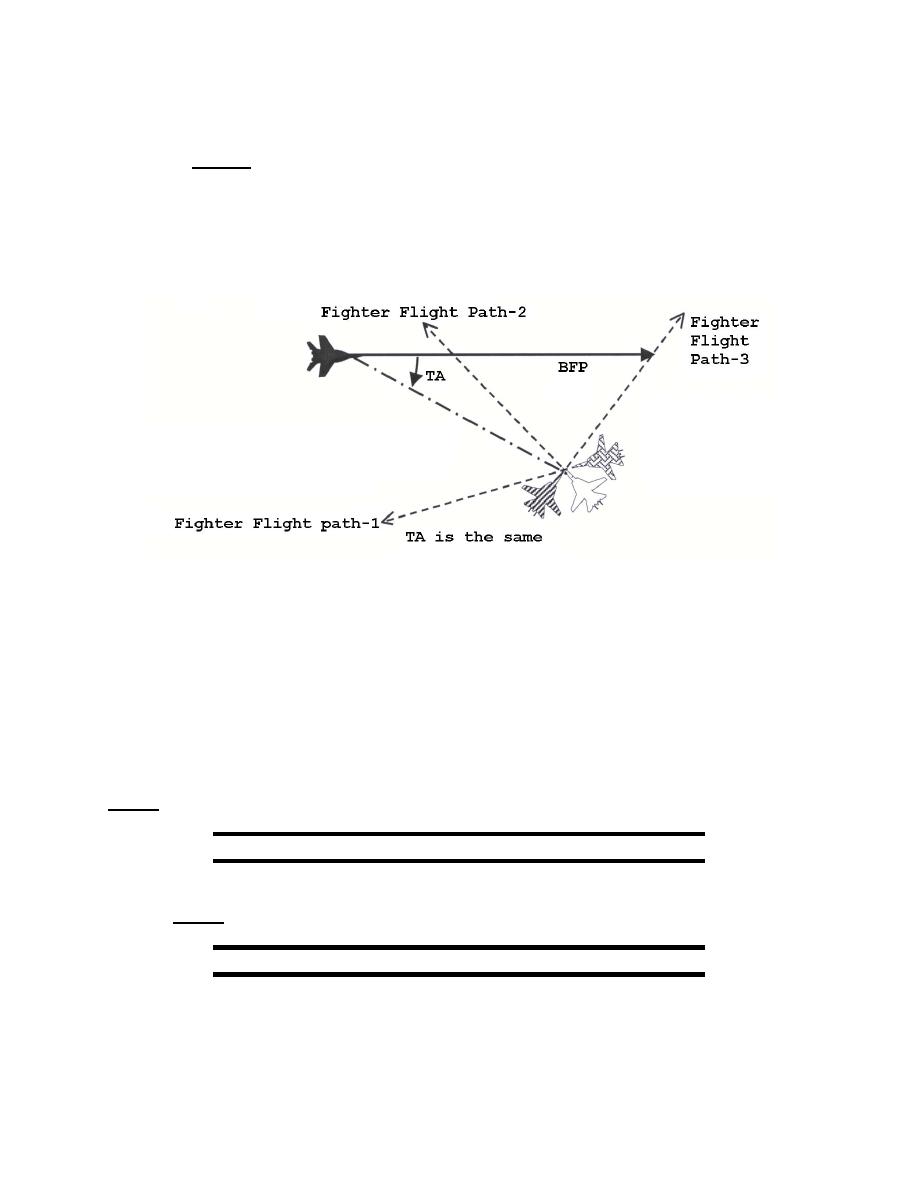 |
|||
|
|
|||
|
|
|||
| ||||||||||
|
|  INTERCEPT PROCEDURES TEXTBOOK
angle off, degrees-to-go, and cut. On the other hand, if the bogey does not change heading, its
flight path remains fixed in space. Therefore, the target aspect changes only when the fighter
changes its position in space relative to the bogey.
Target aspect is unaffected by an instantaneous turn by the fighter, and is only affected by a
change in spatial orientation generated by the fighter's heading over time.
Target aspect must be monitored during the intercept because it provides the only fixed
reference to the bogey's flight path.
Figure 2
Calculating the Target Aspect
Target aspect is measured from the bogey's heading (or its reciprocal) to the fighter's bearing.
Target aspect is measured using information either from the GCI controller or from the aircraft
radar scope. Two formulas are used to determine target aspect.
The first formula uses the bogey's reciprocal heading (BR), and the magnetic bearing from
the fighter to the bogey (BB). Target aspect is the angle from the bogey reciprocal to the bogey
bearing line. Remember that target aspect is given as a direction and a magnitude. Therefore,
always start from the BR and then go to the BB to not confuse the direction of TA.
Formula 1: BR TO BB = TA (L or R)
Target aspect is also equal to the angle from the cut to the angle off (AO). When using this
formula, always start from the cut and go to the AO so as not to confuse the direction of TA.
Formula 2: Cut to AO = TA (L or R)
In actuality, these formulas are identical. If considering the definition of cut (FH to BR),
then it is apparent that both formulas use bogey reciprocal (cut) as the starting point and bogey
bearing (AO) as the finishing point to determine target aspect in degrees and direction. The
reason the TA formula is stated in two ways is to help aircrew determine TA under different
43
|
|
Privacy Statement - Press Release - Copyright Information. - Contact Us |